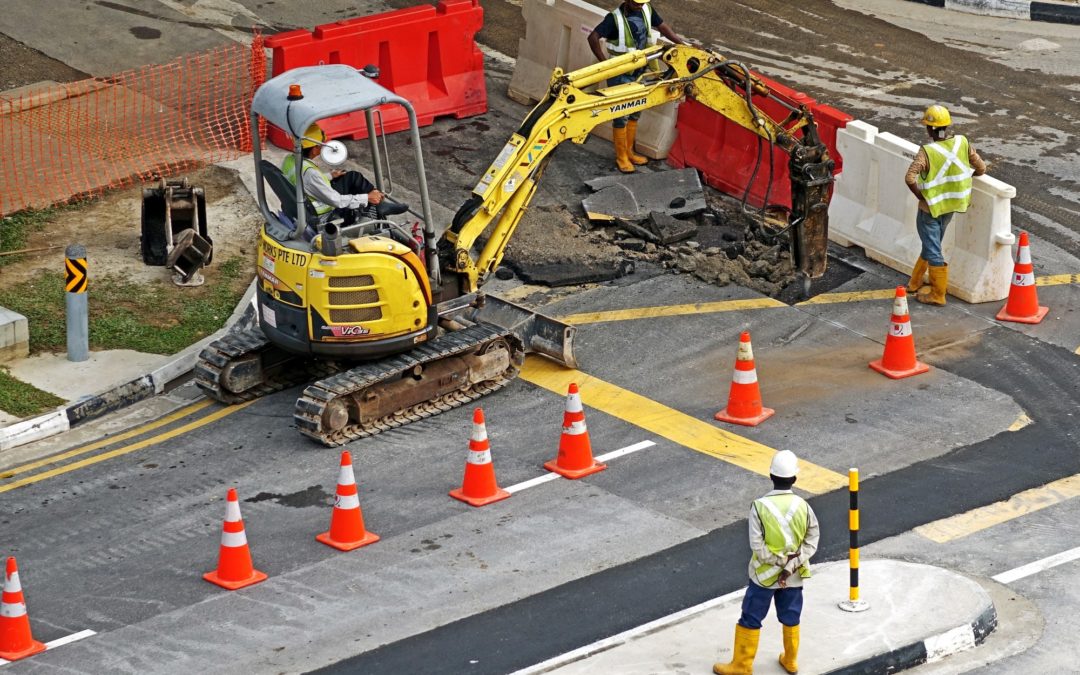Road construction is a constant in Texas, as the state continuously works to improve and expand its extensive highway network. While these improvements are necessary for the long-term benefits of smoother and safer roads, they can cause temporary inconveniences and potential hazards for drivers. In this blog post, we’ll discuss essential tips for navigating construction zones in Texas, helping you stay safe, avoid delays, and ensure a smooth driving experience.
Staying Informed and Planning Ahead
One of the best ways to minimize the impact of construction zones on your drive is to stay informed and plan your route accordingly. Here’s how:
- Check local traffic reports: Before you hit the road, check local traffic reports or use a navigation app to get real-time updates on construction zones and potential delays along your route.
- Plan alternate routes: If you know there will be construction along your route, consider planning an alternate route to avoid congestion and delays.
- Allow extra travel time: When traveling through areas with construction, factor in extra time for potential slowdowns and traffic congestion.
Obeying Signs and Traffic Control Devices
Construction zones will have various signs and traffic control devices to guide you through the work area safely. Paying close attention and following their instructions is crucial for both your safety and the safety of construction workers.
- Follow posted signs: Observe and obey all construction zone signs, including reduced speed limits, lane closures, and detours.
- Pay attention to flaggers: In some construction zones, flaggers will be present to direct traffic. Follow their instructions and be prepared to stop or change lanes as needed.
- Watch for traffic control devices: Be aware of traffic control devices such as cones, barrels, and barricades, which are used to mark the construction area and guide traffic through the work zone.
Adjusting Your Driving Habits
Navigating construction zones safely often requires adjusting your typical driving habits. Keep these tips in mind as you drive through work zones:
- Slow down: Reduced speed limits are often posted in construction zones, and slowing down is crucial for the safety of workers and other drivers. Adhere to posted speed limits and be prepared to slow down further if needed.
- Maintain a safe following distance: Construction zones can lead to sudden stops or changes in traffic patterns, so keep a safe distance between your vehicle and the one in front of you to allow for adequate reaction time.
- Be patient: Construction zones can cause frustration and delays, but it’s essential to remain patient and keep safety as your top priority. Remember that the work being done will ultimately benefit all drivers.
- Stay alert: Construction zones can present unique challenges and hazards, so stay focused and pay close attention to your surroundings. Avoid distractions such as cell phones, eating, or adjusting your vehicle’s controls.
Merging and Changing Lanes Safely
Construction zones often require drivers to merge or change lanes. Keep these tips in mind to ensure a smooth and safe transition:
- Be proactive: When you see signs indicating a lane closure ahead, begin looking for an opportunity to merge into the open lane safely.
- Use your turn signals: Signal your intentions to change lanes or merge well in advance, allowing other drivers to react accordingly.
- Yield to traffic in the open lane: When merging, be courteous and yield to traffic already in the open lane, making sure there is enough space for you to merge safely.
Be prepared for zipper merging: In some construction zones, the “zipper merge” method may be used, where vehicles from each lane take turns merging at the point of the lane closure. Follow the guidance of traffic signs and be prepared to allow other vehicles to merge in front of you when necessary.
Navigating Nighttime Construction Zones
Many construction projects in Texas occur at night to minimize disruption to traffic during peak hours. Nighttime construction zones present unique challenges, as visibility is reduced and workers may be less visible. Keep these tips in mind when driving through nighttime construction zones:
- Use your low-beam headlights: High-beam headlights can create glare and reduce visibility for workers and other drivers. Use your low-beam headlights when driving through construction zones at night.
- Stay extra vigilant: Be especially alert for workers, equipment, and traffic control devices in nighttime construction zones, as they may be more difficult to see.
- Pay attention to reflective markers: Watch for reflective markers on traffic control devices, barricades, and construction equipment, which can help guide you safely through the work zone.
Protecting Construction Workers
Road construction workers face significant hazards while working near moving traffic. As a driver, you play a crucial role in ensuring their safety. Follow these guidelines to help protect construction workers:
- Observe posted speed limits: Reduced speed limits in construction zones are designed to protect both workers and drivers. Adhere to posted speed limits and be prepared to slow down further if needed.
- Stay in your lane: Drifting out of your lane or into closed lanes can put workers at risk. Stay within the marked lanes and avoid crossing into work areas.
- Be aware of large construction vehicles: Large vehicles, such as trucks and construction equipment, may enter or exit the work zone. Be prepared for sudden movements and give these vehicles plenty of space to maneuver.
- Avoid distractions: Stay focused on the road and your surroundings while driving through construction zones to ensure the safety of workers and other drivers.
Conclusion
Navigating construction zones in Texas can be challenging, but by staying informed, adjusting your driving habits, and following the guidance of traffic control devices and signs, you can ensure a safe and efficient journey. Remember that your actions directly impact the safety of construction workers and other drivers, so always prioritize safety and patience when driving through work zones. By following the tips outlined in this blog post, you can contribute to a safer driving environment for everyone on Texas’ highways and roads.

Patrick M. is Editorial Director for the always expanding DriveSafe Online library of courses. With over two decades of experience developing award-winning training, he now focuses on innovating online driver safety training. Pulling from his background in journalism, he steers the wheel behind the creation of top-tier content that promotes a better journey—whether on the digital highway of learning or the real roads we travel every day.
